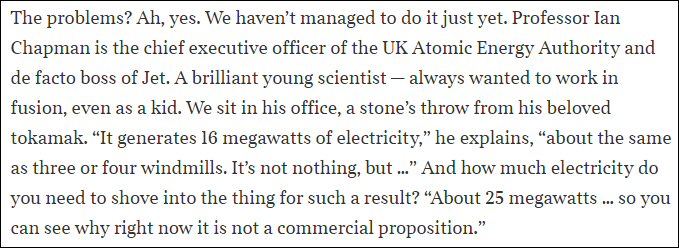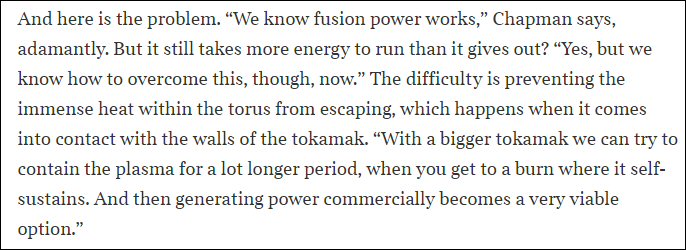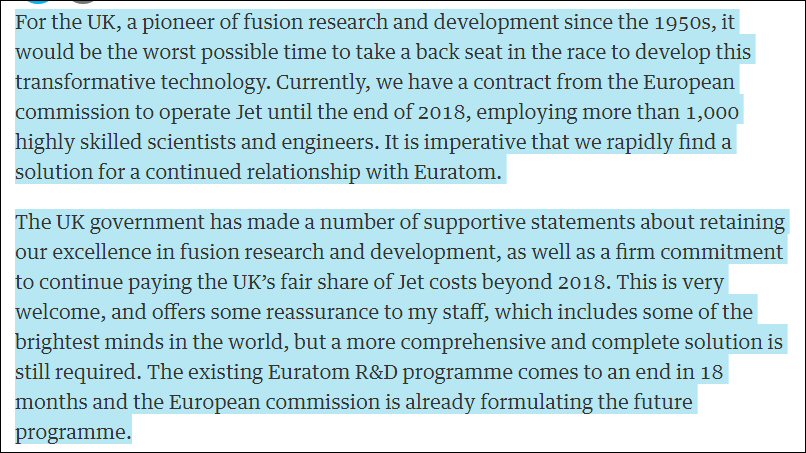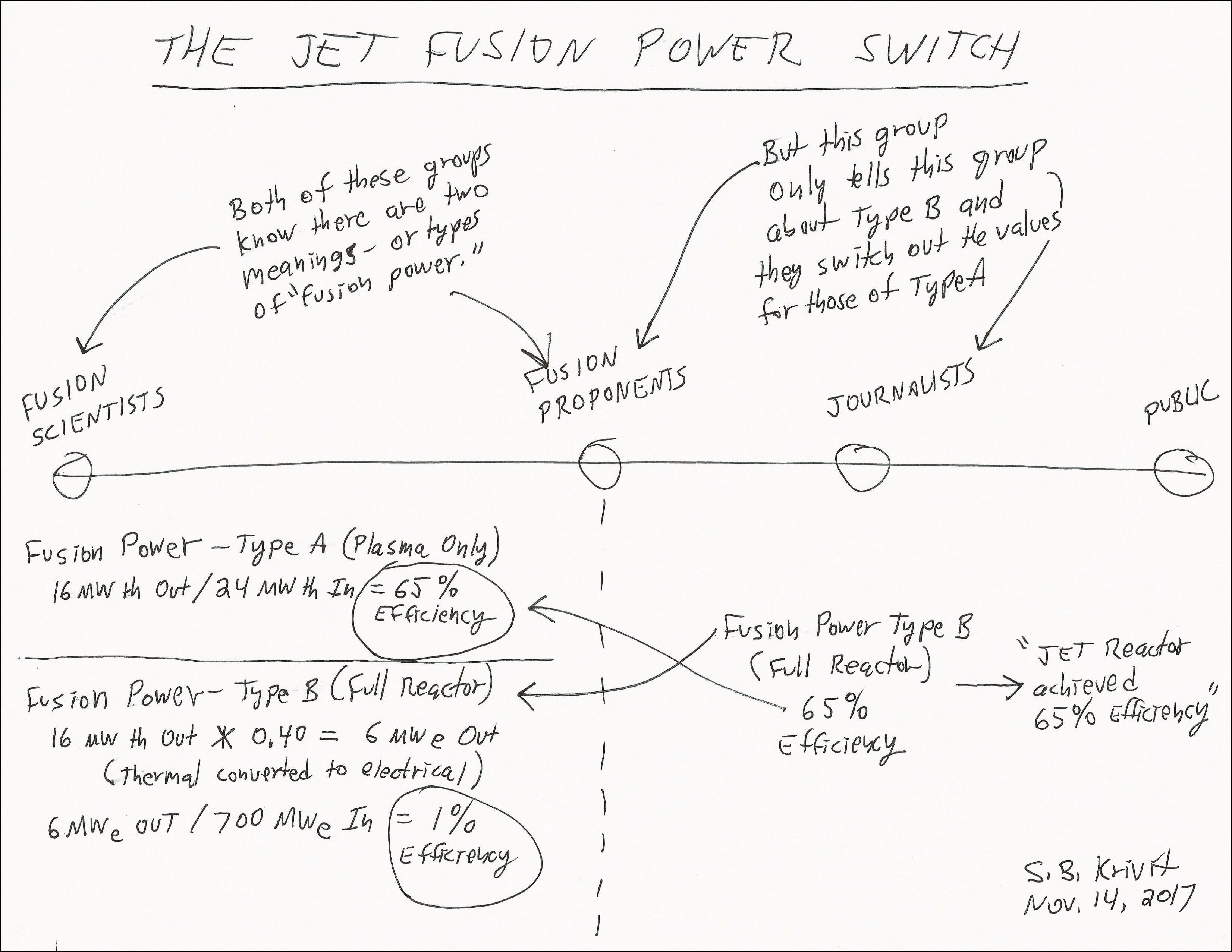10. Head of U.K. Nuclear Fusion Center Concedes Inaccuracies

Ian Chapman, CEO UKAEA
Nov. 16, 2017 — By Steven B. Krivit
Yesterday, Ian Chapman, the chief executive officer of the U.K. Atomic Energy Authority, acknowledged the inaccuracy of his statements about the performance of the U.K.’s biggest fusion reactor. Chapman’s inaccurate quote was published in the U.K. Sunday Times on Nov. 12, 2017.
Chapman is one of several fusion scientists who have consistently provided false and misleading statements about fusion reactor performance to the news media and public. Chapman told the Sunday Times that the U.K. Joint European Torus (JET) fusion reactor produced 16 megawatts (MW) of electrical power with a 25 MW input. If true, this would represent an efficiency of 64 percent.
In fact, the 16 MW output was in the form of heat, not electric power. More significant, instead of requiring 25 MW of electrical input power, the reactor required 700 MW of electrical input power. This means that the most powerful controlled nuclear fusion experiment in the world produced power equivalent to only 1 percent of the power it consumed. In other words, the result was a net loss of about 684 MW of electricity.

Three inaccuracies by Ian Chapman given to U.K. Sunday Times
Here is the third of three e-mails New Energy Times sent yesterday to Chapman, copied also to Steven Cowley, the former CEO of the U.K. Atomic Energy Authority, and to Nick Holloway, the head of media relations for the organization:
=========================================
Subject: False Statements Directly Attributed to Ian Chapman in The Sunday Times
Professor Chapman,
I’ve not received any response from you. Allow me then, to summarize the situation as I understand it. (Please correct any misunderstanding of mine, if it exists.)
You are directly quoted in the Sunday Times article giving three scientifically false and misleading statements:
1. “[JET] generates 16 megawatts of electricity.” This is false because JET has never generated any electricity.
2. The author writes “And how much electricity do you need to shove into the thing for such a result?” You responded “About 25 megawatts.” This is false because you need to “shove” 700 MW of electricity into “the thing” to get 16 MW th.
3. “[JET] generates 16 megawatts of electricity, about the same as three or four windmills.” This is false because JET has only produced a net loss of power whereas windmills actually produce net positive power.
=========================================
Yesterday evening, Chapman sent this e-mail to New Energy Times:
=========================================
Steven,
Thank you for your e-mail pointing out the inaccuracy relating to JET performance in the Sunday Times article. I have written to the journalist to point this out.
Ian
=========================================
Fusion scientists and their proponents have been misrepresenting the performance of the JET fusion reactor for decades (Supplement to The Selling of ITER – PDF). They know that the term “fusion power” has two meanings. (See The ITER Power Amplification Myth for a detailed explanation.) But they don’t tell journalists or the public about the second meaning. When asked by journalists how much power the JET reactor produced, they switch the values, as shown in the New Energy Times diagram below. (Click on the image to expand it full screen.)
While making this switch, and providing the inaccurate information to journalists, they tell the public that nuclear fusion is the key to unlimited energy and that cheaper, cleaner power from fusion is on the horizon.

News headline from Nov. 12, 2017, Sunday Times article by Rod Little featuring Ian Chapman
Despite the fact that the most powerful controlled nuclear fusion reaction in the world produced 16 MW of thermal power at the expense of 700 MW of electrical power, publicly funded fusion scientists say that fusion power works and that generating fusion power commercially will soon be a viable option.

Statements given by Ian Chapman to U.K. Sunday Times
The “bigger tokamak” Chapman refers to is the ITER reactor. In a July 15, 2017, opinion article in The Guardian, Chapman told readers that “ITER will demonstrate nuclear fusion power on a commercial scale.”

In reality, if all goes as planned, ITER will demonstrate how scientists can take 300 MW of electricity from the grid and turn that into 500 MW of heat. If they were to convert (it’s not part of the design) that heat into electricity, they’d end up with 200 MW of electrical power, 100 MW less than what they started with.
In his opinion article, Chapman explains why is it imperative to keep public money flowing to his organization: There are 1,110 highly skilled fusion scientists and engineers whose jobs are at stake.

Follow-up to this matter is in this article: Steven Cowley’s Role in the Misleading JET and ITER Fusion Claims


